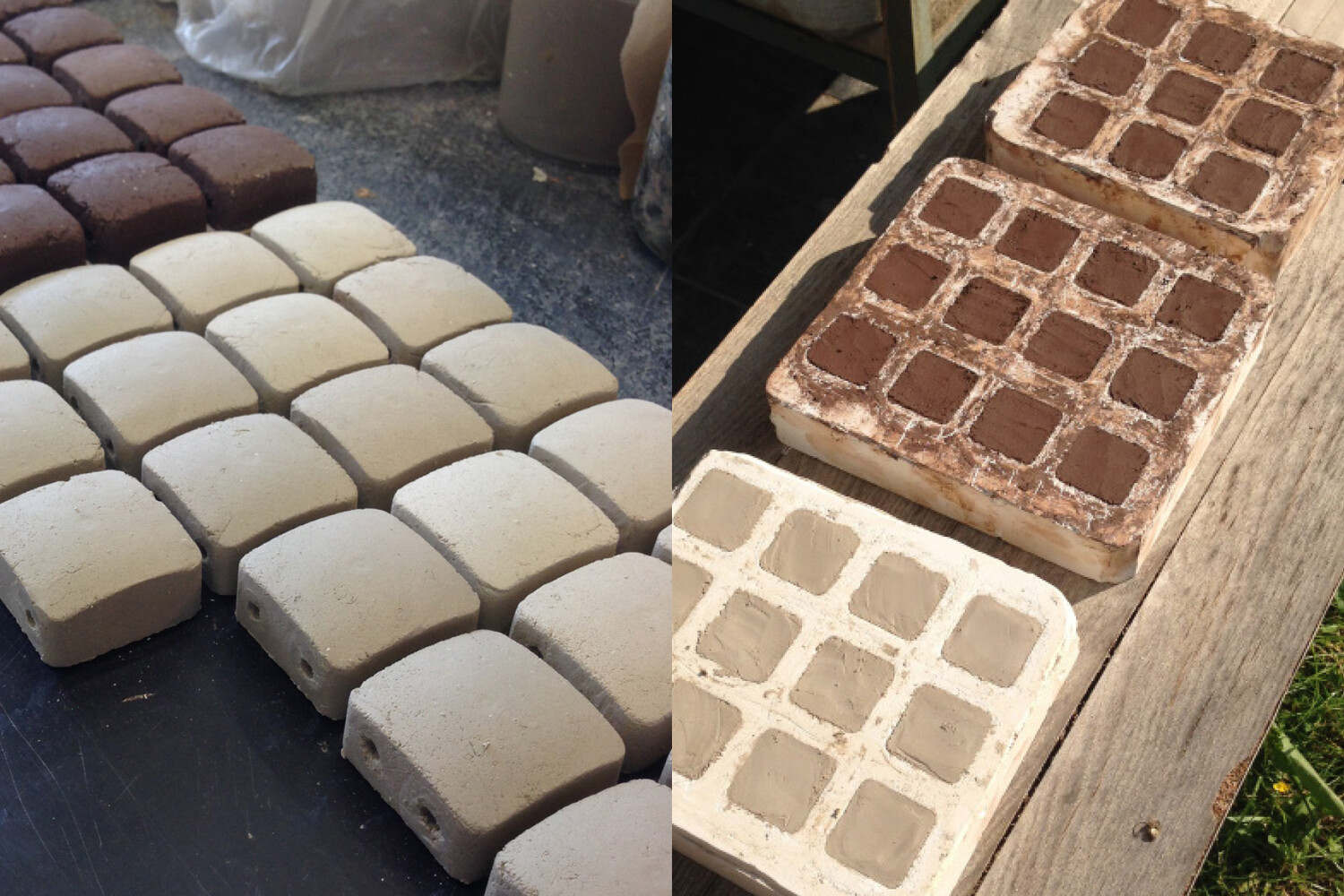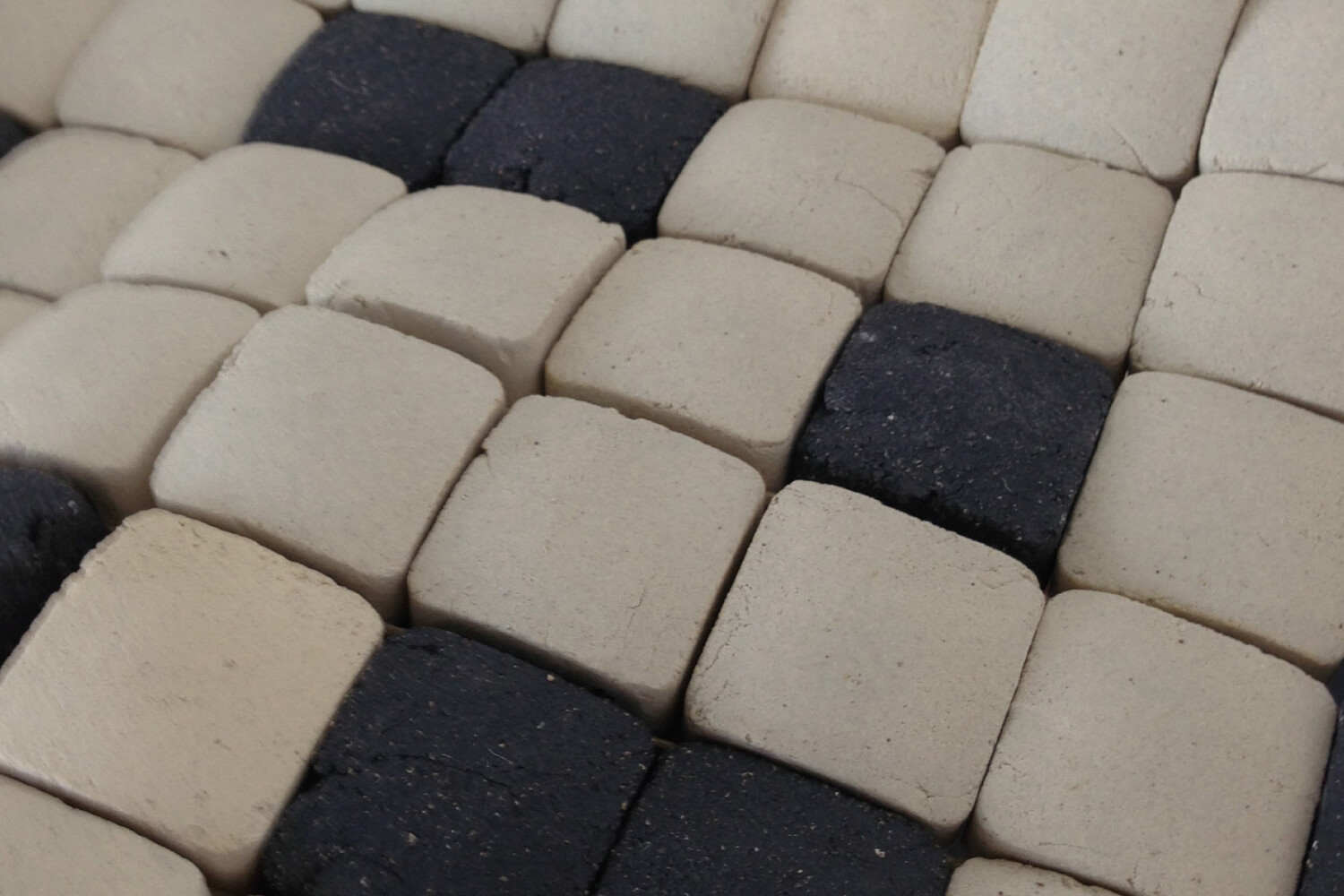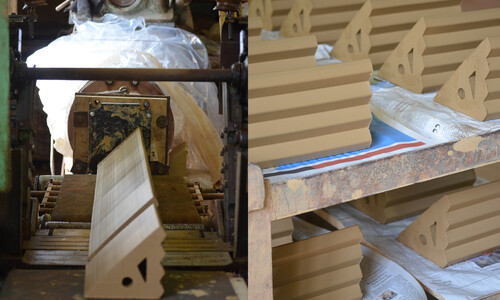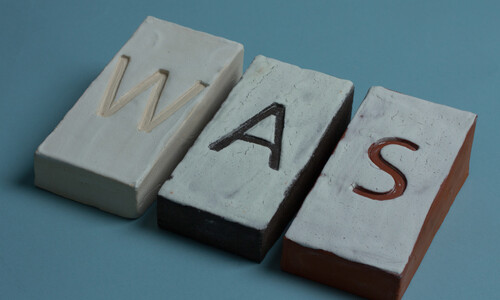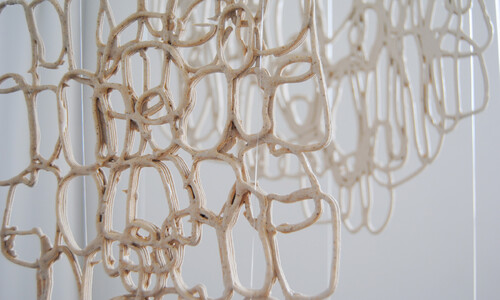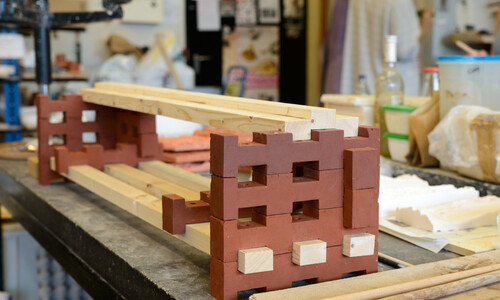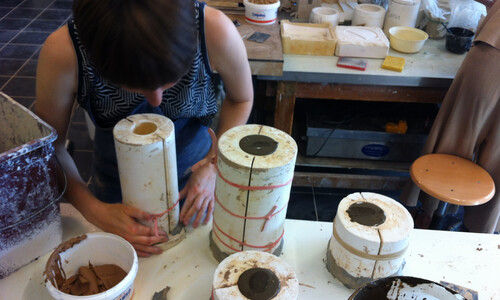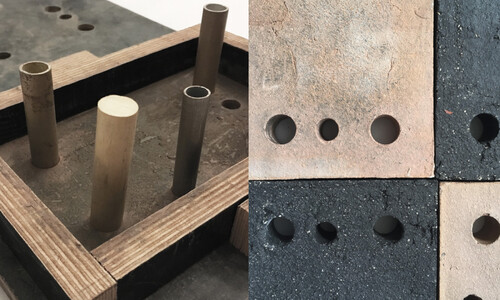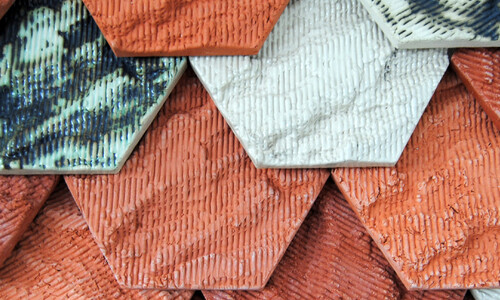Rattan, a material derived from the rattan palm, has long been used in Southeast Asia for furniture and a wide variety of household and everyday products, but it has also been present in Europe for several centuries. In contrast, clay is considered a truly local material—although it exists worldwide and has given rise to its own distinct artisanal traditions everywhere. The project Ad hoc deals with the physical, as well as cultural, contrast of these two materials and their potential interaction.
Clay is hard, heavy, and brittle, while rattan is light, soft, and flexible. When combined, however, they can develop entirely new tactile and visual qualities. In this project, a lightweight and flexible surface is created by connecting small ceramic modules with rattan in a woven-like structure. It can be stretched like an elastic weave, adapts to various shapes, and interacts with the body like a soft, flexible fabric.
The modules form an essential part of the textile construction and allow the warp and weft to be connected through small, internal, vertically arranged channels through which the rattan strands are threaded. Only the ceramic elements are visible on the surface itself, while the rattan only becomes visible on the outer side.
Ad hoc not only demonstrates the interaction of two contrasting materials through the combination of rattan and clay but also explores the networking of regional and global cultures, introducing new cultural connotations into the design.
